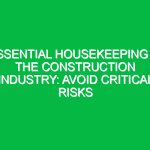“`html
How Observant Are You? Essential Tips to Enhance Workplace Safety
Good morning team,
Today, we’re going to discuss a crucial aspect of our daily operations—being observant and how it plays a vital role in enhancing Workplace Safety. Our objective is to ensure that everyone understands the importance of vigilance in identifying potential Hazards and implementing Safety Measures effectively. So, let’s dive into why being observant is not just a good habit but a necessary part of our job.
Understanding How Observant Are You?
Being observant means having a keen awareness of your surroundings and recognizing any changes that may pose risks. This skill is pivotal in maintaining a safe work Environment. When employees are observant, they can identify hazards before they turn into serious accidents, thus protecting themselves and their coworkers.
One common misconception is that only Safety officers or management need to be vigilant. In reality, every employee has a role to play in Workplace Safety. An observant workforce is our first line of defense against accidents. Each one of you is not just a worker, but a vital contributor to a safe work environment.
Key Hazards, Risks, and Safety Considerations
Let’s discuss some specific hazards and risks that can arise in our workplace:
- Slips, Trips, and Falls: These are among the most common workplace accidents. Wet floors, loose cables, or uneven surfaces can lead to serious injuries.
- Machine Operation: Employees operating machinery need to be attentive to their surroundings and ensure that safety protocols are being followed.
- Chemical Exposure: Understanding the materials you work with and their potential hazards is critical. Always read labels and safety data sheets.
- Ergonomic Risks: Poor posture or repetitive strain can lead to long-term health issues. Being aware of your body mechanics while working is essential.
Ignoring these hazards can lead to severe consequences. For instance, a slip on a wet floor can result not only in injury but also in lost productivity and increased insurance costs. Being observant of these risks helps mitigate potential accidents.
Best Practices, Procedures, & Actionable Advice
Here are some Best Practices to enhance your observance and overall Workplace Safety:
- Conduct Regular Safety Walkthroughs: Take a few moments each day to inspect your work area for hazards. Look for anything out of place or unsafe.
- Be Aware of Your Surroundings: Always be on the lookout for changes in your environment, such as wet floors or unsecured equipment.
- Report Hazards Immediately: If you see something unsafe, report it to a supervisor right away. Don’t assume someone else will take care of it.
- Participate in Safety Training: Engage in all safety training sessions offered. They are designed to help you recognize hazards and apply Safe Practices.
For example, let’s consider a recent incident where an employee noticed a leaking pipe in the warehouse. Instead of ignoring it, they reported it to their supervisor, who was able to fix the issue before it caused any accidents. This scenario illustrates the power of being observant and proactive.
Regulations, Standards, and Compliance
Compliance with safety Regulations is not just about following rules; it’s about protecting lives. Regulatory bodies like OSHA have established Standards to ensure workplace safety. Familiarizing yourself with these regulations is crucial.
For instance, osha mandates that all employees must be trained in recognizing and reporting hazards. Understanding these regulations can help you advocate for a safer workplace and ensure that we are all compliant.
Employee Engagement & Discussion
Now, let’s take a moment to engage in discussion. Think about the following questions:
- What safety challenges have you encountered related to being observant?
- Can you share an instance where your observance prevented an accident?
- How can we further improve our workplace safety culture through observation?
Feel free to share your thoughts. Remember, your experience and insights can help strengthen our collective approach to workplace safety.
Conclusion & Key Takeaways
In summary, being observant is a critical skill that we must all cultivate to enhance workplace safety. By recognizing potential hazards, reporting them, and adhering to safety protocols, we can create a safer work environment for everyone.
Let’s make a commitment today to prioritize observance in our daily routines. Thank you all for your attention and dedication to making our workplace a safer place. Remember, your safety and the safety of your colleagues depend on your vigilant actions.
“`


